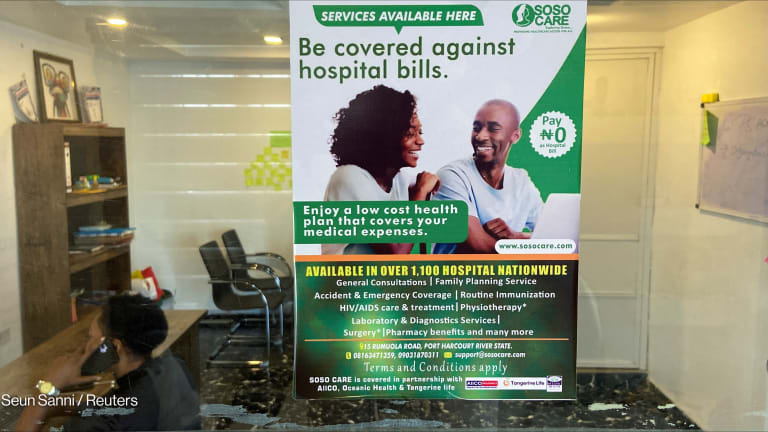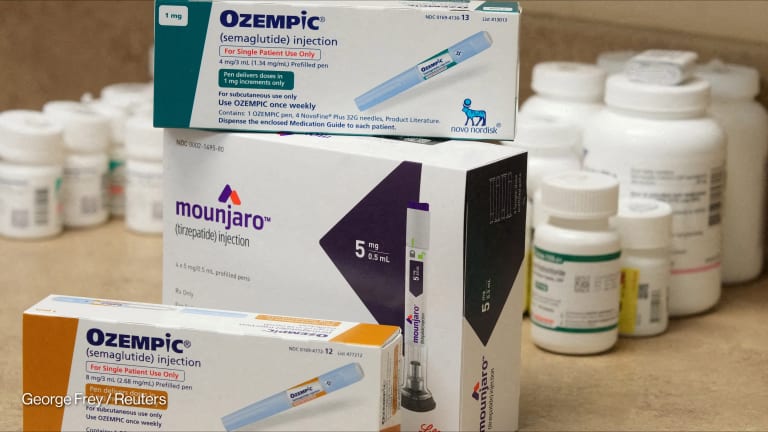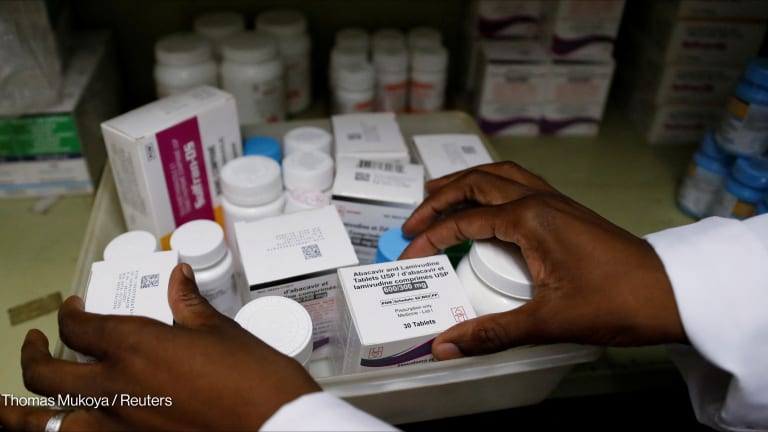Mozambique is rolling out its mHealth platform nationwide — and this is how
Devex goes behind the scenes of the mHealth rollout in Mozambique, one of the first low-income countries to take digital health to the national scale, to learn how they are making it happen.
BARCELONA — Mozambique, which has one of the lowest doctor-to-patient ratios in the world, is rolling out a mobile health platform to strengthen community health delivery in underserved areas — making it one of the first low-income countries to bring an mHealth initiative to the national scale. While digital health strategies have sprung up by the hundreds, most exist only as short-lived pilots or isolated projects. The upSCALE platform, which is intended to become an integral part of the national community health system, has survived beyond this phase. It builds on evidence from a seven-year pilot and a one-year expansion in two provinces of Mozambique, funded by the Bill & Melinda Gates Foundation and the United Kingdom Department for International Development, respectively. The national rollout is expected to take between three and five years to complete. The strategy includes phone- and tablet-based apps designed for community health workers and their supervisors at health facilities. They walk CHWs through the registration, diagnosis, treatment, referral, and follow-up of patients; enhance drug stock management by relaying drug reports in real time; and boost supervision and motivation, two Achilles heels of community-based care. upSCALE partners Malaria Consortium, UNICEF Mozambique, and the Ministry of Health took Devex behind the scenes of the rollout of the platform, and shared hard-learned advice on bringing mHealth to scale. 1. Design with scale in mind upSCALE is not about expanding a project, but about strengthening the community health system as a whole. The platform was conceptualized “with scale in mind and as an integral part of the community health system delivery in Mozambique,” senior research adviser of Malaria Consortium, Karin Källander, told Devex. The NGO was the driving force behind the implementation of the project in the provinces of Inhambane and Cabo Delgado, but “the government is the key owner of the system and is now very much in the driving seat.” “We have built the capacity of the MoH, and here is where you get system-level change: When the ministry feels confident it can take the platform onwards without so much support from an external partner,” she said. 2. Be ready to break new ground Mobile health is a young field. While projects have multiplied quickly in the past few years — a 2012 World Bank report tracked more than 500 studies — there is limited experience about how to bring them to scale. That means emerging platforms have to break new ground. The first challenge, recalls Källander, was programming the application itself. Unlike other mHealth initiatives, upSCALE was not targeting only one disease or type of patient, but the entire health care package delivered by CHWs. This ranges from screening children for malnutrition, to treating elderly people with malaria, to monitoring pregnant women. “Programming the whole curriculum into a single application was very difficult, because it pulls together all the steps from different [paper-based] manuals into an algorithm,” she said. “You often realize that the manuals are inconsistent or contradicting each other, and it is not clear what steps to follow if one patient falls into more than one disease category.” To overcome this, they maintained close links with focal points at the MoH who could quickly provide clarifications, and resorted to World Health Organization literature, “a gold mine” on best practices for community management of various patient groups, they said. 3. Foster government ownership “Moving from an NGO and United Nations-led driving force to an MoH-led one is among the main challenges,” maternal and child health specialist at UNICEF, Alexandre Boon, told Devex. The platform will expand to the province of Zambezia — and possibly to another one — this year, and is expected to reach up to 50 percent of the population by the end of the year. For Boon, government ownership is as much about embracing the mHealth solution as it is about “adequately mobilizing manpower and resources” to manage it on its own. He mentioned the possibility of temporarily assigning technical advisers to the CWH program, and said UNICEF is advising the MoH on how to strengthen its team at the central level. In parallel, Malaria Consortium is showing authorities at various levels how to incorporate the cost of the mHealth platform into existing budgets, so that the digital strategy is seen as an integral cost. “What we are trying to show is that, if upSCALE is delivered as part of the ongoing routine of program activities, it is not a big additional cost,” Källander explained. One of the priorities for this year is building further evidence on the cost of upSCALE and on key indicators such antenatal care before and after its introduction. 4. Set the stage for sustainability Preparing the ground for mHealth adoption and sustainability is no easy task, but Källander shared three lessons from upSCALE: “A starting point is always to try to align the mHealth tool with what exists in paper before anything is changed or added to the system,” she said. Starting at the district and provincial levels, Malaria Consortium developed the digital decision-support system for CHWs using paper-based job aids and manuals, meaning the platform is fully aligned with the MoH diagnostic and treatment protocol for community-based care. “This makes it is much more acceptable to the government stakeholders,” Källander advised. Another “absolutely critical” strategy was building the capacity of MoH staff so they can train CHWs and their supervisors to use the application. Mozambique currently has 4000 CHWs, although they are hoping to double that figure within the next five years, according to Boon. So far, around 660 have undergone training in the upSCALE app, but speaking to Devex, a representative of the Mozambique CHW Program, Humberto Rodrigues, said they expect to train an additional 1,300 CHWs to use the platform this year. A third key is the user-centric design of the application, which was vetted by both CHWs themselves and CHW Program staff, from the messages, language and pictures used to the number of SIM cards and operational policies. From Källander’s perspective, “this process is critical to get people to engage with the system and use it.” 5. Ensure funding stability “Startup costs are the big costs,” said Källander, so partners are tapping into donors’ focus on community-based care and on maternal and child health to ensure the scale-up. “We are showing that upSCALE is not a stand-alone system,” she said, “but part of the community health delivery which many donors are interested in feeding into.” Boon shared with Devex that DFID has committed funds for further expansion through March 2020, and that USAID will also support the scale-up this year. He also mentioned discussions with the Global Financial Facility through the World Bank: “The funds should be coming in this year and run for five years,” he said. 6. Ensure product stability The scale-up of an mHealth solution hinges on the reliability of power supply, phone service coverage and capacity to troubleshoot device problems — all of which are problematic in low-resource environments. “The main challenge is trying to find ways for people with very little mobile service coverage to be able to use the system,” Källander said. The upSCALE system works offline: CHWs can work in the absence of phone signal, but they still need it to submit the data. As a result, partners are looking into working with more than one phone operator in order to get the widest possible coverage. Other possible measures are “offering a little bit of financial incentive to go to an area with signal, or encouraging them to synchronize the data when they go to the health facilities to collect medicines,” explained Källander. As for the phones and tablets, they have been equipped with solar panels that charge both the devices and flashlights, Rodrigues from the CHW Program told Devex — a simple solution that, according to Boon, “has already shown very high robustness and efficiency.” 7. Build local capacity — at all levels A key success factor is getting problems solved on the spot, said Källander. “It is a challenge, but we are learning how to build capacity at every level: Troubleshooting, phone repair … all of this has to be managed locally for the platform to work at scale, sustainably.” For instance, selected CHWs help their peers with the app; supervisors have troubleshooting guides and partners are looking at setting up service contracts with local phone repair companies. One more lesson? “It is difficult to foresee all the small challenges, such as CHWs happening to put their phone in flight mode by mistake,” she said. “We learned that you need to spend a lot of time in the field, going to the CHWs homes and sitting with them to try to understand what their problems are.” 8. Establish secure data hosting Mobile health systems generate large amounts of data, so it is crucial to establish adequate hosting centers. This is especially the case with upSCALE, since partners intend to link it with two systems: The District Health Information System 2, or DHIS2, which will allow community-level data to automatically migrate to the MoH database; and the logistic management system SIGLUS, a mobile application that allows health facilities to manage their stocks and orders. At the moment, upSCALE stores its data in the cloud because Mozambique has “no servers with enough capacity and security status to be able to host it yet,” said Källander. Revisiting this issue is one of the priorities for the year ahead. 9. Identify the data that matters Another priority is finalizing the dashboards for the data to fully integrate DHIS2 and the upSCALE system. That, noted Källander, comes with a challenge: “We have realized how little global standards there are in terms of health data — for example, what sort of indicators should be presented for each disease and patient group.” Partners are jointly identifying the data that is relevant for public health planning, surveillance of outbreaks, and monitoring of trends. They are also building a dashboard that is user-friendly enough to be fully managed by the ministry. “Should we fail to do this carefully, we would overload the system and the people, so that the data would not be used,” she pointed out. Looking forward, another success factor is the capacity to adapt the system over time. Malaria Consortium makes small fixes, especially based on a CHW’s feedback function, but deep alteration of the open-source software still depends on the know-how of developer Dimagi. For Boon, a possible way forward is discussing long-term solutions to the software updates problem based on a corporate social responsibility model. 10. Avoid duplication and create synergies At the moment, Mozambique lacks a national eHealth strategy to coordinate various efforts on digital health, so one of the challenges is avoiding the duplication and fragmentation of interventions across the country. However, “some work has started to get the different eHealth implementers sitting around the same table,” said Källander. In this context, Malaria Consortium is providing feedback to other implementers and to the MoH, both to avoid overlaps and to foster synergies. “We are constantly looking for opportunities to integrate the data from the community level in other systems,” Källander said. “In the absence of an eHealth framework, the way forward is working with the MoH so that it is 100 percent aware of what is going on,” and can make informed decisions about the future of eHealth in Mozambique. Read more Devex coverage on global health.
BARCELONA — Mozambique, which has one of the lowest doctor-to-patient ratios in the world, is rolling out a mobile health platform to strengthen community health delivery in underserved areas — making it one of the first low-income countries to bring an mHealth initiative to the national scale. While digital health strategies have sprung up by the hundreds, most exist only as short-lived pilots or isolated projects.
The upSCALE platform, which is intended to become an integral part of the national community health system, has survived beyond this phase. It builds on evidence from a seven-year pilot and a one-year expansion in two provinces of Mozambique, funded by the Bill & Melinda Gates Foundation and the United Kingdom Department for International Development, respectively. The national rollout is expected to take between three and five years to complete.
The strategy includes phone- and tablet-based apps designed for community health workers and their supervisors at health facilities. They walk CHWs through the registration, diagnosis, treatment, referral, and follow-up of patients; enhance drug stock management by relaying drug reports in real time; and boost supervision and motivation, two Achilles heels of community-based care.
This story is forDevex Promembers
Unlock this story now with a 15-day free trial of Devex Pro.
With a Devex Pro subscription you'll get access to deeper analysis and exclusive insights from our reporters and analysts.
Start my free trialRequest a group subscription Printing articles to share with others is a breach of our terms and conditions and copyright policy. Please use the sharing options on the left side of the article. Devex Pro members may share up to 10 articles per month using the Pro share tool ( ).
Gloria Pallares is a journalist reporting on sustainable development, global health and
humanitarian aid from Africa and Europe. Her work has appeared in a range of publications
including El Pais, Forbes, CIFOR’s Forest News and the leading media outlets in Spain via the
multimedia newswire Europa Press.








